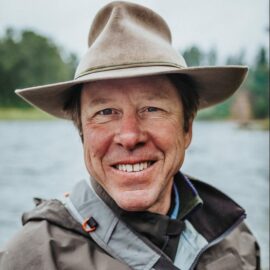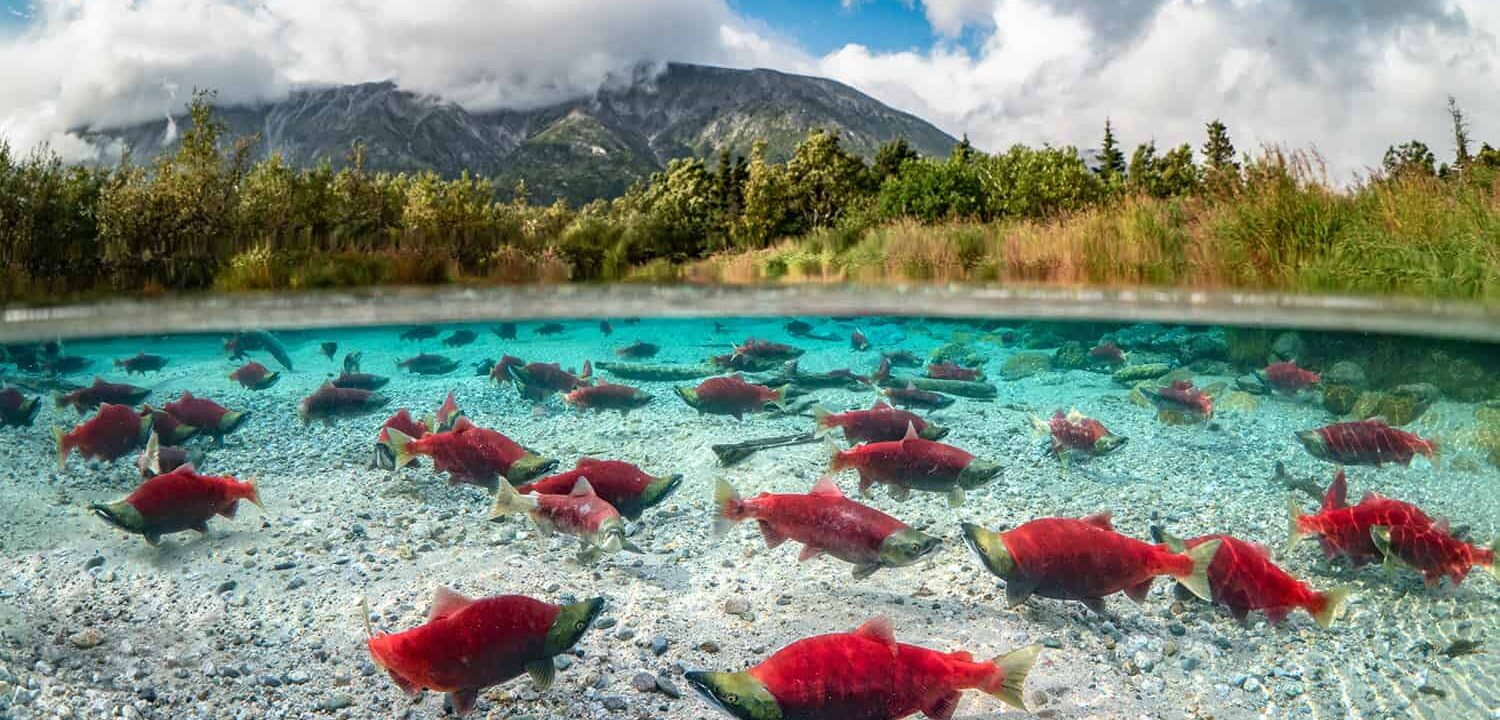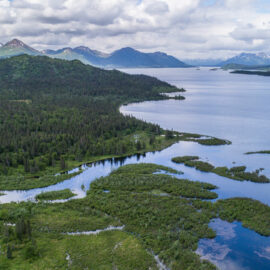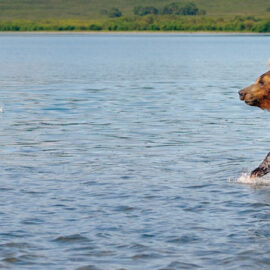Wild Salmon: Keystone of the Pacific
The following is the introduction from our 2018 Annual Report (scroll down for Flipbook version, or download printable pdf here).

From the President
Looking down from space, as the Apollo astronauts did some 50 years ago this summer, you can clearly see the contours of the North Pacific Rim; the rugged shorelines and volcanoes of the Russian Far East, the snow-covered Kamchatka Peninsula, Alaska’s multitude of mountains, and the rich green coastal rainforests of British Columbia, Washington, and Oregon.
Beneath the clouds and floating in the cold water are millions of miles of phytoplankton, churning out the lifegiving oxygen that protects our planet. Under the mats of plankton are the salmon, hunting small euphasiid shrimp, squid, and schools of baitfish. In one of the largest and most miraculous migrations known, they stream like clockwork each year towards the coasts, bringing billions of tons a year of marine nutrients far up the rivers and streams that flow into the North Pacific.
If the earth is a living, breathing organism, and the oceans are its lungs, then the salmon are the blood cells that bring nutrients from the ocean to feed the food webs across millions of miles of streams and rivers from California to Japan. We are all inextricably linked to that food web stretching across the North Pacific. And like an organism, we must build a local “immune response” to defend these river systems from internal or external threats.
The mission of the Wild Salmon Center is to strengthen this immune response in each of the Pacific’s salmon strongholds. We do this by making a multidecadal commitment to conservation in each watershed, and then building a defensive perimeter, like layers of armor against future threats. These can be new parks or forest reserves, riparian buffers, fish management and conservation reforms, and most importantly, strong local conservation organizations.
Whether it’s a proposal to de-water a coastal salmon stream on the Tillamook rainforest, or an open pit gold mine in Alaska, the threats will continue to come. We must build the strength and resilience to be prepared to fight back—for as long as it takes.
In the pages of this year’s Annual Report, you’ll read more about the role salmon play as the “keystone” of the North Pacific. And you’ll learn about WSC’s integral role in the region, as a catalyst for protecting the great river systems built on salmon. As always, it’s your support that enables us to keep this miraculous, pulsating region alive and well in a century of change.
Guido Rahr,
President and Chief Executive
Click the expand button to view the 2018 Annual Report in full screen mode ![]() or download pdf here.
or download pdf here.




